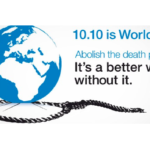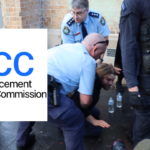No Notoriety for Mass Murderers

The last decade has been marred by a number of deadly mass shootings around the world.
In July 2012, the city of Aurora in Colorado was rocked by tragedy after lone shooter James Eagan Holmes unleashed a string of bullets during a screening of The Dark Knight Rises. 12 people were shot dead, and another 70 were injured.
Less than 6 months later, 20-year-old Adam Lanza killed 20 children and 6 staff at the Sandy Hook Elementary School in Connecticut. It was the second-deadliest shooting by a single person in US history after the Virginia Tech shootings which had occurred just five years previously.
And this year, the world watched in horror as gunmen Chérif and Saïd Kouachi opened fire at the offices of Charlie Hebdo in Paris, killing 11 people.
Most struggle to understand why these attacks occur – and why there have been so many over the past few years.
Many of the shootings which make international headlines occur in the United States, where there have been an estimated 70 mass shootings since 1982. And according to researchers, this number is on the rise – with 33 shootings since 2006 alone.
But a recent study may shed some light on why mass shootings continue to occur.
Researchers at Arizona State University suggest that mass shootings are ‘contagious’ – and that media coverage of these incidents may play a role in inspiring further attacks.
The Study
Researchers examined data from a range of mass shootings – which were defined as shootings where four or more people were killed – and ran them through a mathematical model.
They found that national media coverage of mass shootings prompted further incidents, with 20-30% of shootings inspired by past attacks. This phenomenon is known as the ‘contagion’ effect.
The study also revealed the astonishing figures behind mass shootings in the United States, showing that they occur on average once every two weeks – and around once a month inside schools.
According to researchers, this meant that most shooting incidents had a ‘contagion effect’ of about 13 days; meaning that subsequent attacks were likely to occur during this period.
Those behind the study say that national media coverage was to blame for ‘spreading’ the likelihood of further attacks; with research professor Sherry Towers suggesting that media attention acts as a ‘vector that reaches people who are vulnerable’ and have access to weapons.
And the extent of media coverage is also a factor in whether future attacks will occur; incidents which received only local media coverage tended to focus on small-scale (involving less than four fatalities) were not as contagious as those which received national media coverage.
The No Notoriety Campaign
Friends and family of those killed in mass shootings have called for limits to be placed on media coverage of mass shooting incidents.
Earlier this year, the parents of Alexander Teves, who was tragically killed in the Dark Knight cinema shootings, launched the ‘No Notoriety’ campaign.
The campaign asks media outlets to refrain from publishing certain information about shooting incidents such as the shooter’s name, photos and other information unless the suspect is still at large.
They believe that these actions will reduce the likelihood of ‘copycat’ attacks by those seeking fame or notoriety.
The campaign is backed by a several organisations, including the International Police Association and the FBI, who claim that many shooters commit attacks to put themselves in the spotlight.
Some have even suggested that police and media outlets who spread information about shootings should face legal sanctions where their actions compromise public safety.
Is the Media Responsible?
While the findings of the study might suggest that the media should refrain from publicising mass shootings, experts say that media attention can also play a part in reducing the likelihood of future incidents.
Data shows that members of the public are more alert after highly-publicised shootings and are more willing to report suspicious activity to police.
Unfortunately, there are a multitude of factors behind prevalence of mass shootings and most experts agree that the leading cause of gun crime in the United States is the availability of weapons.
Around three quarters of mass shootings between 1982 and 2012 involved a weapon that was obtained legally. And states with greater restrictions on gun ownership tended to have less shootings, while those with higher rates of ownership experienced more gun crimes and mass shootings.
Another driving factor is mental illness. Health professionals estimate that 61% of all shooters have been diagnosed with, or exhibit symptoms of, a mental illness.
James Eagan Holmes, the man behind the Dark Knight cinema shootings pleaded not guilty by reason of insanity, with his lawyers arguing that he was suffering from a psychotic episode at the time of the incident. His trial is expected to conclude later this year.
Despite the fact that mental illness is a ‘risk factor’ in public shootings, health professionals have been quick to remind the public that just because someone suffers from a mental illness does not mean that they will go on to commit violent crimes.
Indeed, many worry that such a perception may simply stigmatise the mentally ill. At the same time, many have argued that countries plagued by high rates of public shootings would benefit from better mental health policies.
Regardless of the impact that media attention might have on future attacks, it is perhaps unfair to solely blame media outlets for the incidents.
Rather, a collaborative approach which addresses the availability of guns, mental illness and media coverage might lead to a reduction in the commission of such horrific incidents.






